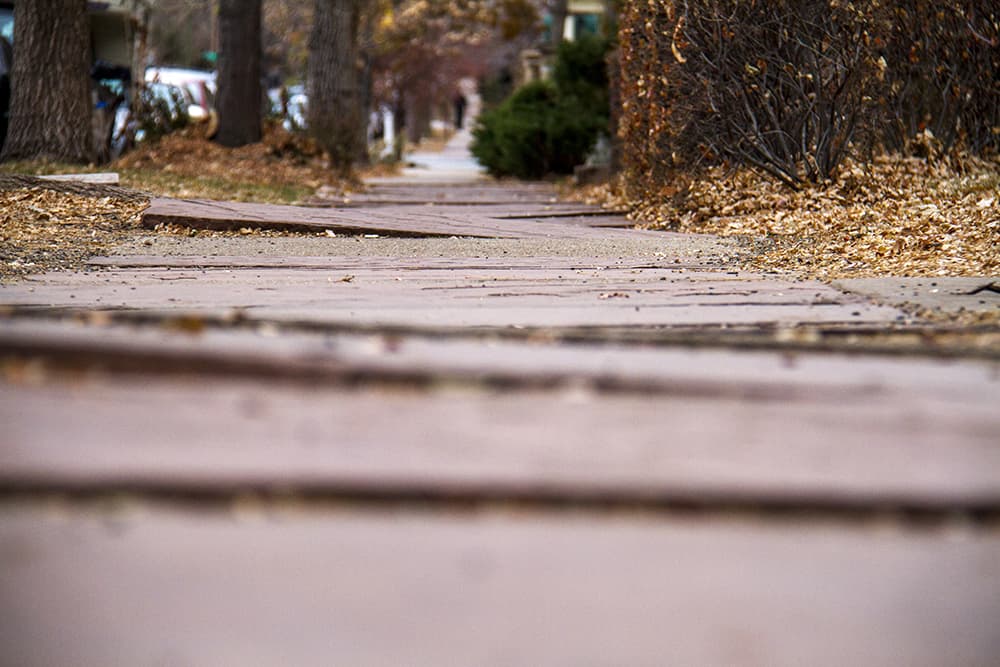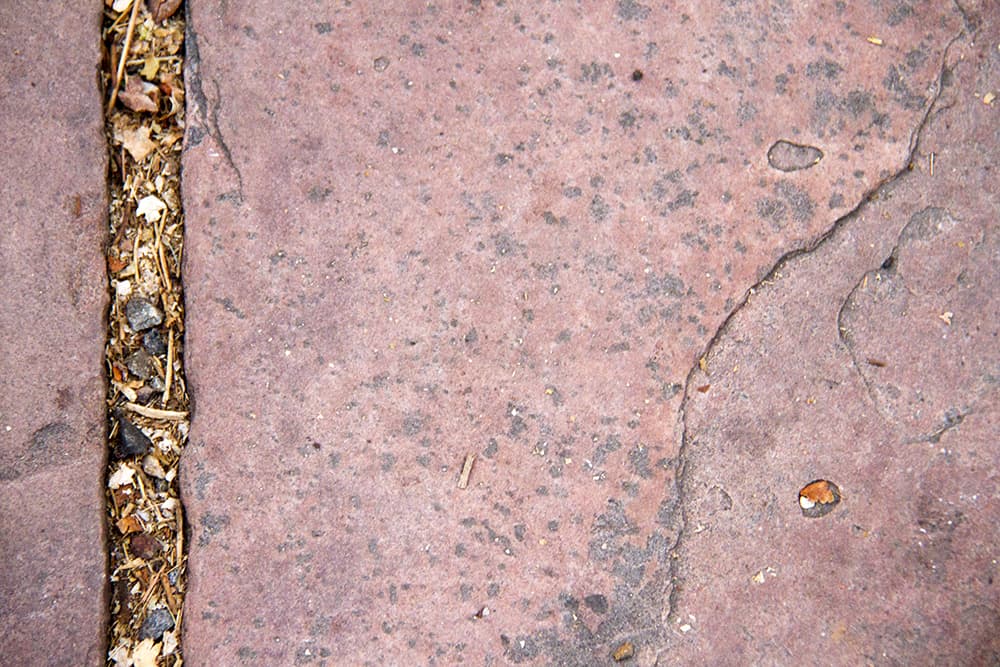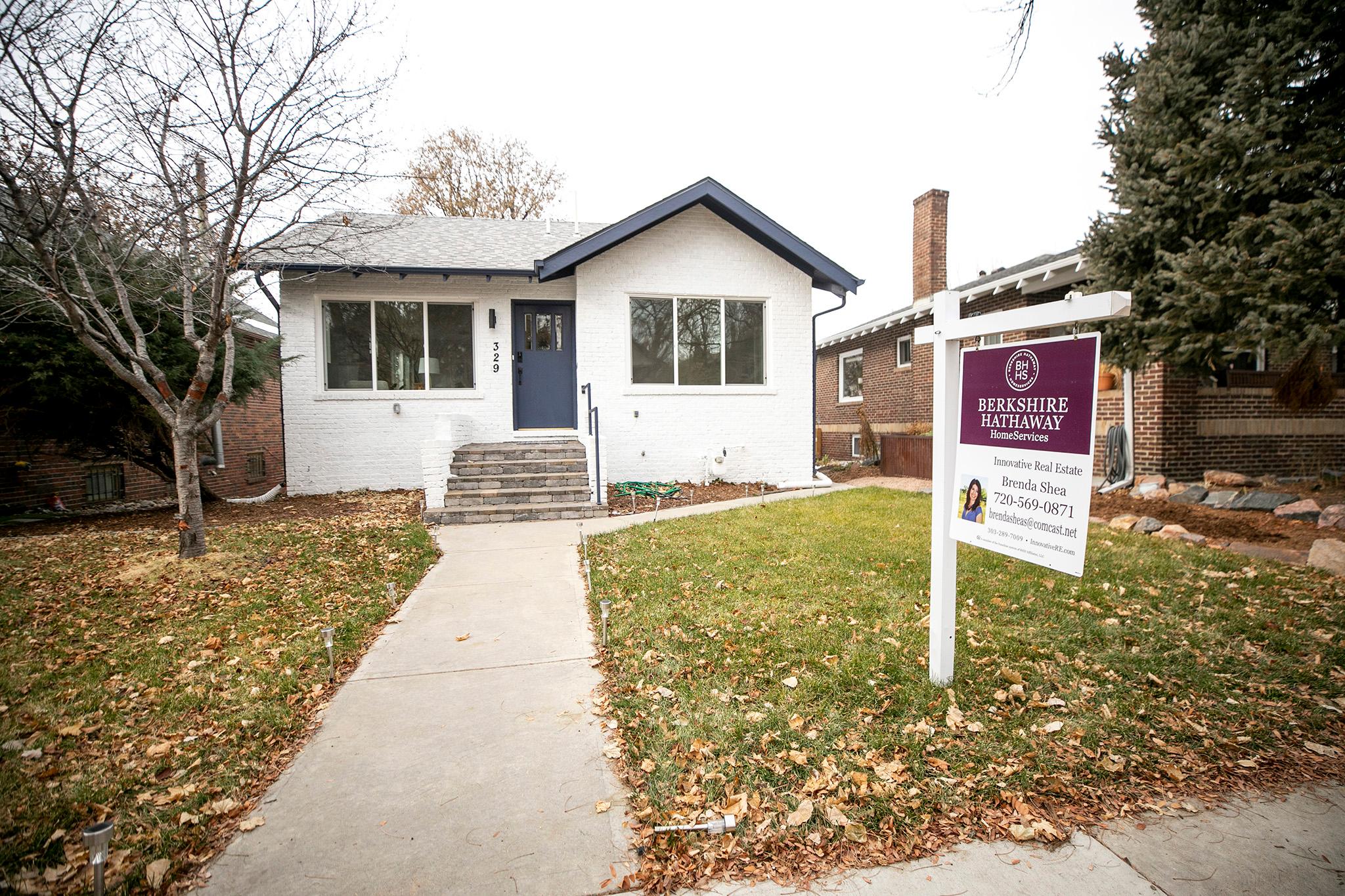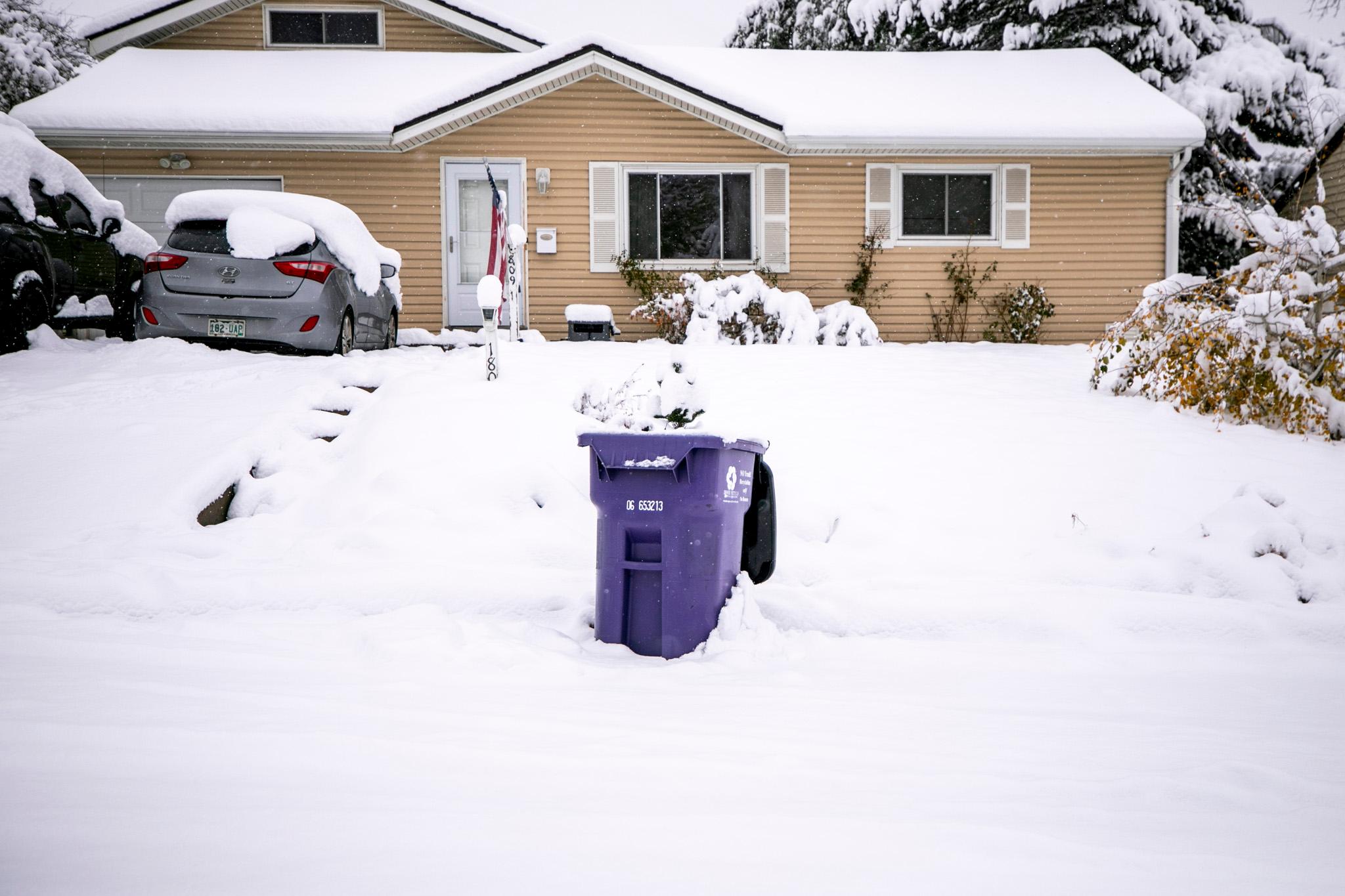
Maybe you trip on them, maybe you hate them, but there's no denying that Denver's flagstone sidewalks are distinctive.
Colorado's most celebrated poet, Thomas Hornsby Ferril, even immortalized them in 1982 with his poem "Sidewalks in Denver."
My sidewalk out in front
is made of flagstone
scuffed by feet like mine
and chipped by frost
into shapes of continents,
oceans and islands.
You see them best
on a rainy April day.
I give them names.
I sail my ship
through the Straits of Marigold
past Lilac Harbor
up to Punkin Park
where I mull a thousand years or so
on the mixed-up world below. ...
Today, they are recognized as part of historic neighborhoods and as a pain to shovel in the winter.
But at one point, they were actually easier to take care of than any other sidewalk. Back when Denver first started installing sidewalks in the 1860s or so, they were all made of wood.
By the early 1880s, flagstone was the material de jour. That was partly due to the city of Lyons.

Lyons was founded in 1880 and shortly thereafter, the town founder was exporting red sandstone to Denver for its sidewalks.
By 1882, Denver had over 25,000 feet of stone sidewalk, according to an article from the Denver Republican. Plank sidewalks, made of wood, were still more frequently installed, likely because it was cost-effective.
Of course, the distinctive pink was also a way to show off how wealthy you were.
Denver's "largest and gaudiest homes" were being built on Capitol Hill at the time, and the neighborhood was becoming a "visible scene created explicitly for the conspicuous display of new wealth," William Wycoff wrote in Creating Colorado.
So among the Romanesque facades and the "cacophony of turrets," there were lots of flagstone sidewalks.
The Tabor Block, now home to the 16th Street Mall's Cheesecake Factory, was the most opulent building of its time. Built in 1880, it claims the city's first flagstone sidewalk, according to the book Denver’s Larimer Street.

We know where this sidewalk ends, though. Cement began to replace sandstone as a cheaper and easier way to build in the early 1900s.
In fact, old city registers show that it was 4 cents cheaper per square foot to lay a cement sidewalk in 1909. Accordingly, the city laid nearly eight times as many feet of cement sidewalks as they did stone ones.

That's true today, too. Denver uses concrete for the most part when building sidewalks related to city projects, says Denver Public Works Spokesperson Nancy Kuhn.
So difficult though they may be, Denver's flagstone sidewalks are an uncommon treasure jutting up from your walkway.













